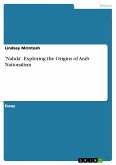Between two languages is a barrier. That is language barrier. How does a speaker of one of the languages learn to speak the other? How does language barrier be overcome so that a native speaker of a language can learn other languages easily? It might not be easy after all. This is so because the differences between two languages are not confined to sound patterns and vocabulary or meaning of words. There is also the sentence structure where words have to be put in order and sentences could be combined in certain ways. Languages have significantly different systems of word order and phrase and sentence combination.Furthermore, styles of expressions also differ between languages. According to Mark C. Baker (2003), no aspect of language is immune to variation.
Hinweis: Dieser Artikel kann nur an eine deutsche Lieferadresse ausgeliefert werden.
Hinweis: Dieser Artikel kann nur an eine deutsche Lieferadresse ausgeliefert werden.








